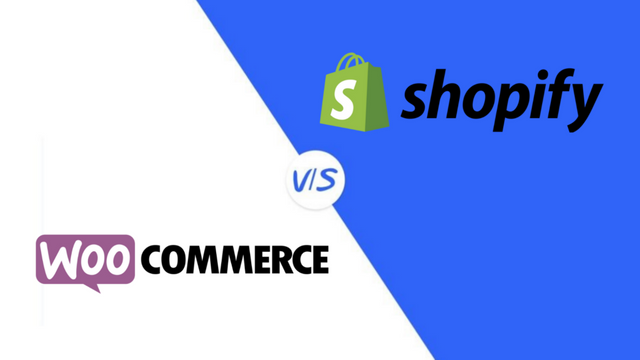
Starting an ecommerce business was a tall order back in the early days of online retail. The development side was an obvious challenge. Setting up an ecommerce store from scratch wasn’t easy then and it’s not easy now either.
Keeping the development side aside, creating a system to deliver products and maintaining the website was a huge problem.
Companies like Amazon and eBay had a big head start because they had the resources to manage the entire process efficiently.
Small and medium businesses trying to get some skin in the game didn’t have an obvious point of entry.
The arrival of ecommerce CMS
Ecommerce CMS made the process of setting up an ecommerce business much easier.
They essentially enabled SMBs (small and medium sized businesses) to start an online retail store without the need to code from scratch.
The movement towards ecommerce CMS started with 3DCart back in 1997. However, it took a long time until a truly new code solution arrived in the market.
Shopify launched in 2006 and has since become the number one ecommerce CMS in the world. It quietly closed $470M in the first quarter of 2020, growing 47% compared to the same period in 2019.
While Shopify is very popular, it’s not the only option available to SMBs. WooCommerce is also a viable option.
WooCommerce emerged late in the ecommerce CMS market. However, its innate compatibility with WordPress made it a viable option for millions of websites around the world.
There are many ecommerce CMS options in the market besides these two. Magento, OpenCart, Prestashop, and Drupal are some of the popular ones. However, Shopify and WooCommerce are easily two of the most popular choices for entrepreneurs and companies today.
This piece offers a factor-based comparison between Shopify and WooCommerce. Readers will be able to make up their minds on which CMS presents them with the best odds of success.
Ease of use
One of the big reasons people choose working with an ecommerce CMS is ease of use. Developing an online store from scratch with code is a big challenge. A CMS like Shopify and WooCommerce can easily get you going,
The choice between Shopify and WooCommerce thus eventually starts with ease of use.
Shopify is generally considered an easier platform to learn. It has a very straightforward and sleek interface designed to not overwhelm new users.
WooCommerce is also easy to use, but there are a few complications. Firstly, WooCommerce is a WordPress plugin, not a CMS in its own right. This makes it necessary for users to learn using WordPress before jumping into WooCommerce.
There are other complications as well. Designing an ecommerce store on WordPress generally requires the use of plugins like Elementor as well. This makes the learning curve a little difficult.
Shopify is much more straightforward. Users simply have to load their products and voila, their product pages are ready.
Affordability
WooCommerce is like any other free WordPress plugin. Users who already have a WordPress website simply need to download the plugin and create their online store. There is no need to pay an extra subscription fee.
Shopify is different. Users have to subscribe to a Shopify plan in order to use it as a CMS to sell their products. Plans tend to range from $29/month to $299/month.
This makes Shopify a less viable option for an entrepreneur stepping into the world of ecommerce. $29 a month is not a simple commitment. It generally takes a person roughly 3-4 months to truly understand the ecommerce world. Paying money for a CMS from day one makes Shopify a less attractive option.
Customizations
WooCommerce benefits from its association with WordPress when it comes to customizations. WordPress has the backing of a large community of developers who bring all kinds of plugins to the market.
These plugins enable WooCommerce users to add a lot of functionality to their store and customize it completely.
Shopify also offers a ton of plugins to make life easier for their users. However, the scope and size of their plugin library pales in comparison to WordPress. On the question of customizations alone, WooCommerce is far ahead.
Mobile experience
WordPress websites generally offer a very smooth mobile experience to users. This makes the mobile experience of WooCommerce stores very smooth as well.
Mobile experience doesn’t just mean optimizing mobile versions of online websites. It also covers how these CMS systems behave in a native app environment.
Users have the option to turn WooCommerce to Android app with the help of popular app builders like AppMySite. These platforms basically provide users the options to create a native app out of a website without coding.
Shopify doesn’t yet have a lot of presence in the app builder world. This makes it difficult for Shopify users to get a native app to represent their store.
WooCommerce is leading in this regard. However, it is only a matter of time before platforms like AppMySite create an option for Shopify users to create a native app from their store as well.
Also read: How to create and launch your Shopify mobile app for absolute success?
Scalability
Both WooCommerce and Shopify are reliable when it comes to the question of scalability.
Shopify offers advanced subscription packages that enable users to create more staff accounts, develop insightful reports, get lower transaction fees, and integrate third party apps to calculate shipping costs at checkout.
Scaling a WooCommerce store is also easy with an array of plugins helping users do the same. There is no need for users to subscribe to a higher subscription plan either.
There are other factors besides choice of CMS that are crucial for scalability. Optimizing website speed, creating a native app for the online store, and expanding the product range all come into the picture.
In conclusion
Shopify and WooCommerce are very popular names in the world of SMBs. They are the easiest platforms for companies today to set up an ecommerce business.
This piece presents five important factors users must consider when choosing between Shopify and WooCommerce. You can read about other crucial factors in the following piece.
Read: WooCommerce vs Shopify: Discover the pros & cons of the choicest eCommerce platforms
Even if you make the right choice, you will ultimately need to find a way to enter the app market. You will find yourself in a position where you need to develop your Shopify app or convert WordPress website to Android app.
In such a position, it will be vital to choose the right mobile app builder. Make sure you choose a reliable one like AppMySite.


